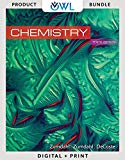
(a)
Interpretation: The structures of the given compounds are to be drawn.
Concept introduction: Structure of any organic compound is drawn by following the sets of rules devised by IUPAC. Any structure denotes a particular compound. The root word determines the number of carbons while counting the longest carbon chain. Double of triple bond should be given lowest carbon number. Prefixes like di, tri, tetra, etc. signifies presence of more than one substituents.
(b)
Interpretation: The structures of the given compounds are to be drawn.
Concept introduction: Structure of any organic compound is drawn by following the sets of rules devised by IUPAC. Any structure denotes a particular compound. The root word determines the number of carbons while counting the longest carbon chain. Double of triple bond should be given lowest carbon number. Prefixes like di, tri, tetra, etc. signifies presence of more than one substituents.
(c)
Interpretation: The structures of the given compounds are to be drawn.
Concept introduction: Structure of any organic compound is drawn by following the sets of rules devised by IUPAC. Any structure denotes a particular compound. The root word determines the number of carbons while counting the longest carbon chain. Double of triple bond should be given lowest carbon number. Prefixes like di, tri, tetra, etc. signifies presence of more than one substituents.
(d)
Interpretation: The structures of the given compounds are to be drawn.
Concept introduction: Structure of any organic compound is drawn by following the sets of rules devised by IUPAC. Any structure denotes a particular compound. The root word determines the number of carbons while counting the longest carbon chain. Double of triple bond should be given lowest carbon number. Prefixes like di, tri, tetra, etc. signifies presence of more than one substituents.
Trending nowThis is a popular solution!

Chapter 22 Solutions
Bundle: Chemistry, Loose-Leaf Version, 10th + OWLv2 with Student Solutions Manual, 4 terms (24 months) Printed Access Card
- Synthesize 2-Ethyl-3-methyloxirane from dimethyl(propyl)sulfonium iodide using the necessary organic or inorganic reagents. Draw the structures of the compounds.arrow_forwardSynthesize 2-Hydroxy-2-phenylacetonitrile from phenylmethanol using the necessary organic or inorganic reagents. Draw the structures of the compounds.arrow_forwardSynthesize N-Methylcyclohexylamine from cyclohexanol using the necessary organic or inorganic reagents. Draw the structures of the compounds.arrow_forward
- Synthesize N-Methylcyclohexylamine from cyclohexanol using the necessary organic or inorganic reagents. Draw the structures of the compounds.arrow_forwardIf possible, please provide the formula of the compound 3,3-dimethylbut-2-enal.arrow_forwardSynthesize 1,4-dibromobenzene from acetanilide (N-phenylacetamide) using the necessary organic or inorganic reagents. Draw the structures of the compounds.arrow_forward
- Indicate the products obtained by mixing (3-oxo-3-phenylpropyl)triphenylphosphonium bromide with sodium hydride.arrow_forwardWe mix N-ethyl-2-hexanamine with excess methyl iodide and followed by heating with aqueous Ag2O. Indicate the major products obtained.arrow_forwardIndicate the products obtained by mixing acetophenone with iodine and NaOH.arrow_forward
- Indicate the products obtained by mixing 2-Propanone and ethyllithium and performing a subsequent acid hydrolysis.arrow_forwardIndicate the products obtained if (E)-2-butenal and 3-oxo-butanenitrile are mixed with sodium ethoxide in ethanol.arrow_forwardQuestion 3 (4 points), Draw a full arrow-pushing mechanism for the following reaction Please draw all structures clearly. Note that this intramolecular cyclization is analogous to the mechanism for halohydrin formation. COH Br + HBr Brarrow_forward
 Chemistry for Today: General, Organic, and Bioche...ChemistryISBN:9781305960060Author:Spencer L. Seager, Michael R. Slabaugh, Maren S. HansenPublisher:Cengage Learning
Chemistry for Today: General, Organic, and Bioche...ChemistryISBN:9781305960060Author:Spencer L. Seager, Michael R. Slabaugh, Maren S. HansenPublisher:Cengage Learning
 Introductory Chemistry: An Active Learning Approa...ChemistryISBN:9781305079250Author:Mark S. Cracolice, Ed PetersPublisher:Cengage Learning
Introductory Chemistry: An Active Learning Approa...ChemistryISBN:9781305079250Author:Mark S. Cracolice, Ed PetersPublisher:Cengage Learning Chemistry: Principles and ReactionsChemistryISBN:9781305079373Author:William L. Masterton, Cecile N. HurleyPublisher:Cengage Learning
Chemistry: Principles and ReactionsChemistryISBN:9781305079373Author:William L. Masterton, Cecile N. HurleyPublisher:Cengage Learning World of Chemistry, 3rd editionChemistryISBN:9781133109655Author:Steven S. Zumdahl, Susan L. Zumdahl, Donald J. DeCostePublisher:Brooks / Cole / Cengage Learning
World of Chemistry, 3rd editionChemistryISBN:9781133109655Author:Steven S. Zumdahl, Susan L. Zumdahl, Donald J. DeCostePublisher:Brooks / Cole / Cengage Learning





